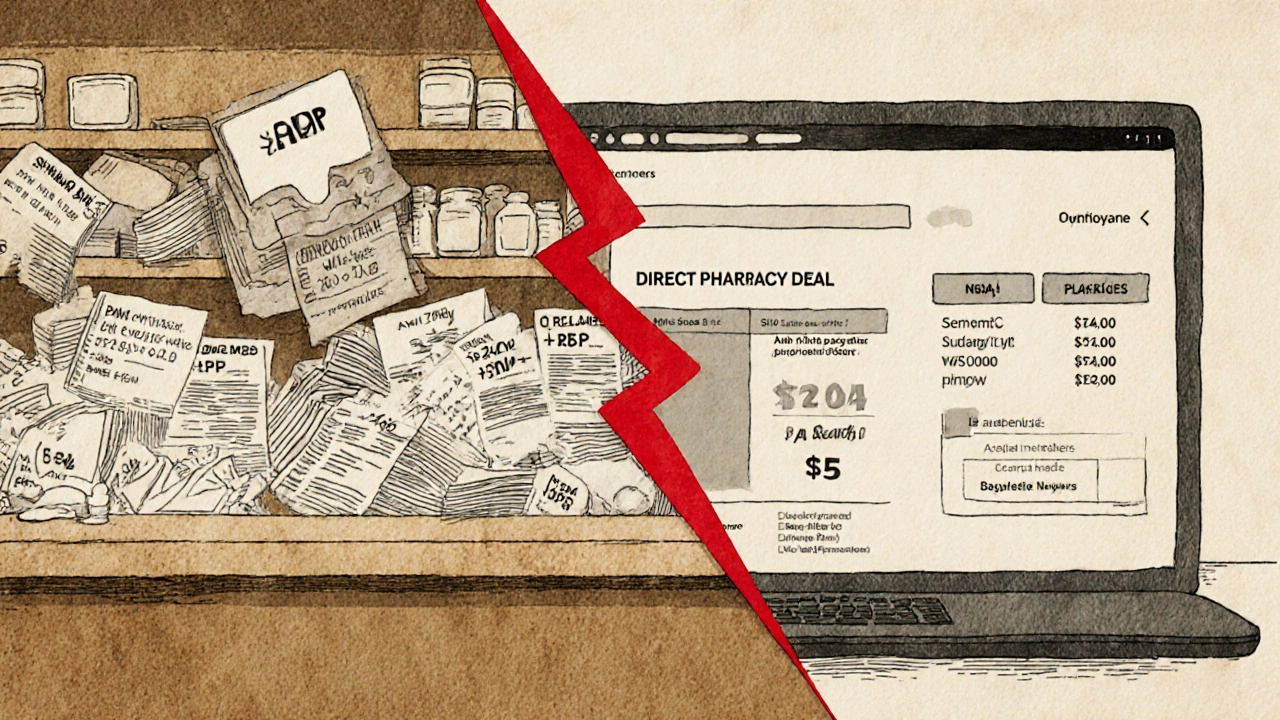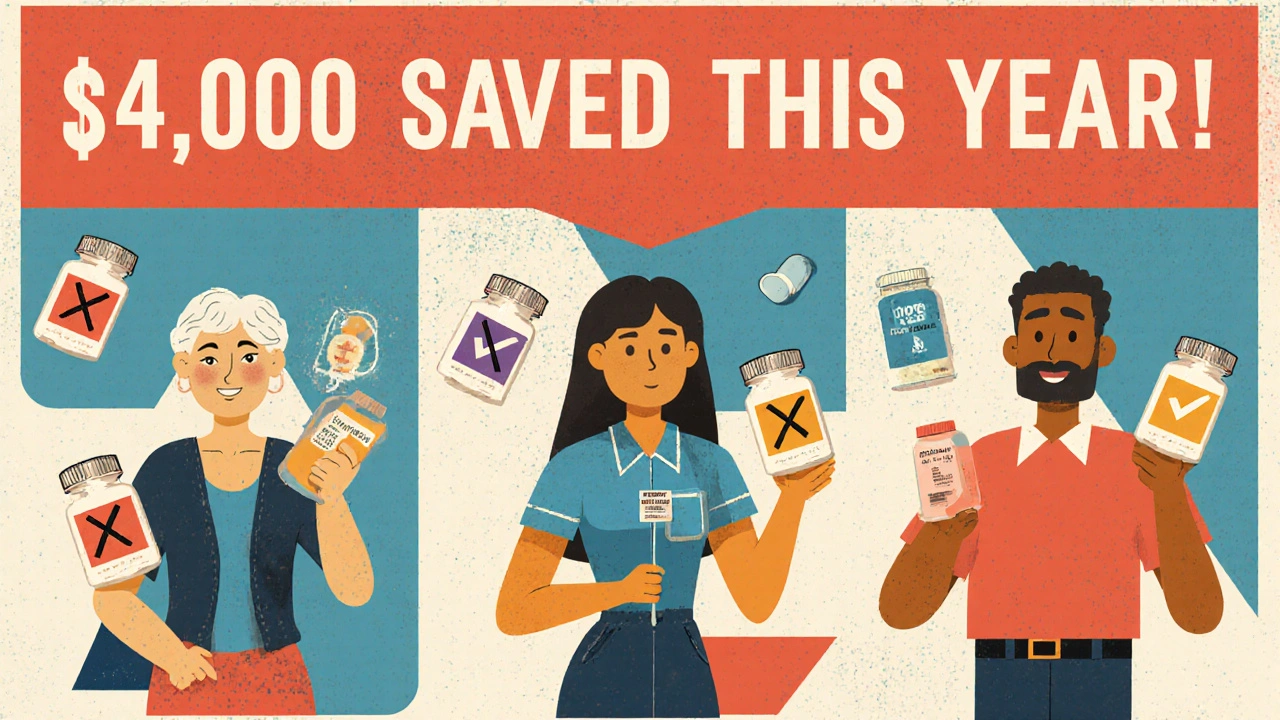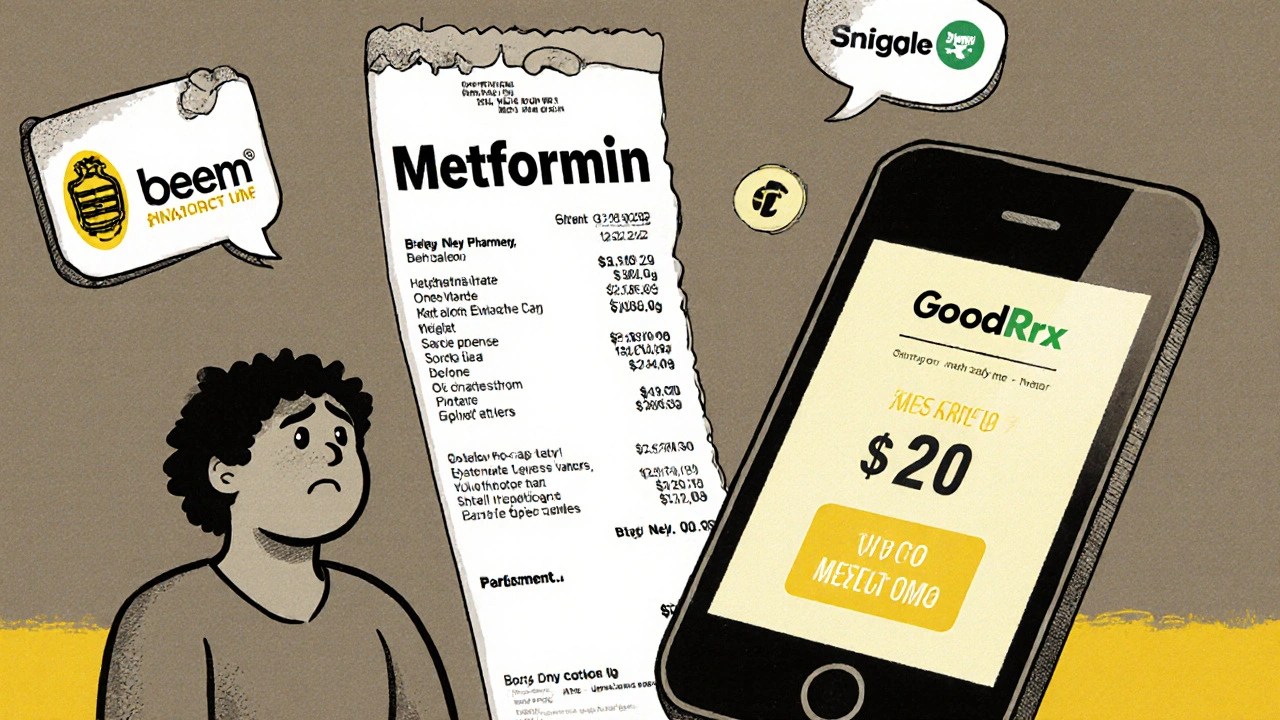If you’ve ever stood in line at a pharmacy, handed over your prescription, and then stared at the total on the receipt like it was a surprise bill from another planet-you’re not alone. The same generic pill, the exact same one, can cost $60 at your local CVS and just $20 online. It’s not a glitch. It’s the system. And knowing how to navigate it could save you hundreds-or even thousands-each year.
Why the Same Drug Costs So Much More at Retail
Retail pharmacies don’t set prices randomly. They use a formula most people don’t even know exists: Average Wholesale Price (AWP) plus a markup and a dispensing fee. For example, a common formula is AWP + 20% + $5. That means if the AWP for a 30-day supply of Metformin is $40, your cash price could easily hit $60. That’s before insurance even gets involved. But here’s the twist: insurance doesn’t always make things cheaper. PBMs (pharmacy benefit managers) negotiate secret deals with pharmacies and drugmakers. What you pay at the counter isn’t the real cost-it’s a price cooked up by middlemen. For uninsured patients, or those with high-deductible plans, that cash price is the only one that matters. And it’s often wildly inflated.How Online Pharmacies Slash Prices
Platforms like Beem, GoodRx, and SingleCare don’t sell drugs themselves. They’re price matchmakers. They cut direct deals with pharmacies-big chains and independents alike-to lock in fixed, discounted rates for common generics. No AWP. No hidden markups. Just a flat price you can see before you click “buy.” Take Lipitor (atorvastatin), a cholesterol drug. At CVS or Walgreens, the cash price might be $250 for 30 tablets. On Beem? $50. Metformin? $60 retail. $20 online. Amoxicillin? $30 in-store. $10 online. These aren’t outliers. They’re the norm for generic medications. These platforms work because they bypass the PBM maze. You’re not paying through insurance. You’re paying the pharmacy directly at a negotiated rate. That’s why even people with insurance sometimes use them-because their copay might still be higher than the cash price online.Who Saves the Most?
The biggest winners? Uninsured patients. People on high-deductible plans. Seniors on Medicare who hit the coverage gap. Anyone who pays out of pocket. A 2023 study from Ohio State University looked at Mark Cuban’s Cost Plus Drug Company and found something surprising: for 76% of medications, the yearly savings between online direct-to-consumer prices and insured retail prices were under $200. But that’s misleading. For many common generics, the difference was zero. For others-like the ones you take every day-the savings were massive. The real win? For expensive brand-name drugs, insurance often still wins. But for generics? Online platforms win every time. Glutethimide, fingolimod, cyclosporine-those specialty meds still cost hundreds or thousands. But for antibiotics, blood pressure pills, thyroid meds, diabetes drugs? You’re looking at 50-80% off.
What You Can’t Get Online (And Why Retail Still Matters)
Online pharmacies aren’t perfect. They’re great for routine refills. Not so great for new prescriptions, urgent needs, or complex meds. If you’re starting a new medication, you want to talk to a pharmacist face-to-face. Ask questions. Get warnings about side effects. Understand interactions. Retail pharmacies offer that. Online? You get an email or app notification. Sometimes that’s enough. Sometimes it’s not. Also, not all drugs are available. Specialty medications-those that need refrigeration, require special handling, or are used for rare conditions-aren’t on most discount platforms. They’re still priced through the insurance system. And speed? If you need your pills today, walking into a pharmacy beats waiting 2-5 days for shipping. For maintenance meds-things you take daily for months or years-online is ideal. For emergency refills? Stick with local.Real Savings, Real Examples
Here’s what you could save in a year just by switching your generic meds to online platforms:- Metformin (500mg, 30 tablets): $60 retail → $20 online = $480 saved/year
- Lisinopril (10mg, 30 tablets): $50 retail → $12 online = $456 saved/year
- Atorvastatin (20mg, 30 tablets): $250 retail → $50 online = $2,400 saved/year
- Levothyroxine (50mcg, 30 tablets): $40 retail → $10 online = $360 saved/year
How to Use These Platforms
It’s easier than you think. Here’s how:- Find your prescription name and dosage. Don’t guess-check the bottle.
- Go to Beem, GoodRx, or SingleCare. All are free to use.
- Enter your drug and zip code. The site shows nearby pharmacies with prices.
- Choose the lowest price. Print or show the coupon on your phone.
- Take it to the pharmacy. No insurance needed. Just pay cash.


14 Comments
Alyssa TorresNovember 20, 2025 AT 03:00
OMG I just saved $2,400 this year on my Lipitor alone. I used to cry every time I picked it up. Now I order it like I’m buying coffee. My grandma thinks I’m a wizard. I just show her my phone screen and she says ‘bless you, child.’
Summer JoyNovember 21, 2025 AT 23:52
YASSS this is why I hate pharmacies 😭 They’re basically robbing you with a smile and a clipboard. I once paid $180 for metformin and then found it for $12 online. I screamed into my pillow. Then I sent the receipt to my insurance company. They didn’t reply. Of course they didn’t.
Gerald CheruiyotNovember 22, 2025 AT 03:49
It’s not about online vs retail. It’s about who controls the supply chain. The system was designed to extract value, not deliver care. The fact that we’ve normalized paying 5x for the same pill is a symptom of something deeper. We’ve outsourced our health to middlemen and then blamed ourselves for being poor.
Michael FesslerNovember 23, 2025 AT 00:31
Just a heads up-some online pharmacies require a valid Rx number and will verify via e-script. If you’re using GoodRx, make sure the pharmacy is in-network with the platform. Also, watch out for expired coupons. I once got flagged for trying to use a 2022 code. Pharmacy staff looked at me like I’d brought a fax machine to a blockchain meetup.
daniel lopezNovember 24, 2025 AT 16:07
EVERYTHING IS A SCAM. The FDA? Controlled by Big Pharma. The pharmacies? Fronts for the cartel. GoodRx? Probably owned by the same people who run the insurance companies. They want you to think you’re saving money so you don’t ask why the system exists in the first place. They’re feeding you breadcrumbs while the whole house burns down.
Nosipho MbamboNovember 26, 2025 AT 12:42
...I don't understand. Why is this even a thing? Why can't you just... pay the price? I mean, isn't this... like... too much effort? I just want to walk in, get my pills, and leave. Why do I have to compare prices? Why is everything so complicated? I'm tired. I just want to be normal.
Katie MagnusNovember 28, 2025 AT 08:53
Ugh. So you're telling me people who can't afford insurance are just... supposed to become online drug hunters? Like it's a hobby? Like we're all supposed to be pharmacists now? What's next? Do I need a PhD to buy aspirin?
King OverNovember 29, 2025 AT 22:35
Been doing this for 3 years. Saved over $5k. No drama. Just save money. Done.
Johannah LavinNovember 30, 2025 AT 22:29
I love how this post doesn’t just tell you how to save money-it reminds you that you deserve to. So many of us feel guilty for wanting affordable healthcare. Like we’re asking too much. But you’re not. You’re just smart. And you’re not alone. I cried when I first used GoodRx. Not because it was cheap. Because for the first time, I felt seen.
Ravinder SinghDecember 2, 2025 AT 00:26
Bro in India we pay $1 for metformin at local chemist. No coupon. No app. Just walk in, hand over script, get pills, pay 80 rupees. Sometimes they give you extra tablets. I know Americans think this is revolutionary but honestly? This is how the world works outside your bubble. You’re late to the party.
Russ BergemanDecember 2, 2025 AT 09:18
Wait. You’re telling me you can just... buy drugs online? Like... without a prescription? That’s illegal. That’s dangerous. That’s how people die. Are you sure these aren’t counterfeit? Did you check the batch numbers? Did you verify the pharmacy’s DEA license? What if the pill is laced? What if it’s not even real? I’m not saying you’re wrong-I’m saying you’re reckless.
Dana OralkhanDecember 3, 2025 AT 11:31
Just wanted to say thank you to everyone who shared their stories. I’ve been on levothyroxine for 12 years and never knew I could save $360 a year. I’ve been skipping doses because I couldn’t afford it. I’m going to try this tomorrow. I’m scared, but I’m trying. Thank you for not making me feel dumb for not knowing.
Jeremy SamuelDecember 5, 2025 AT 09:21
goodrx? more like badrx. i tried it once. pharmacy said coupon was expired. i said it was right there on the screen. they said they dont accept it. so i paid full price and cried in my car. now i just dont fill my scripts. its easier.
Destiny AnnamariaDecember 7, 2025 AT 01:33
Y’all are so lucky you even have access to this. My cousin in Puerto Rico pays $200 for insulin. No online options. No discounts. Just pain. If you’re saving $4k a year on meds, you’re not just smart-you’re privileged. Don’t forget that.